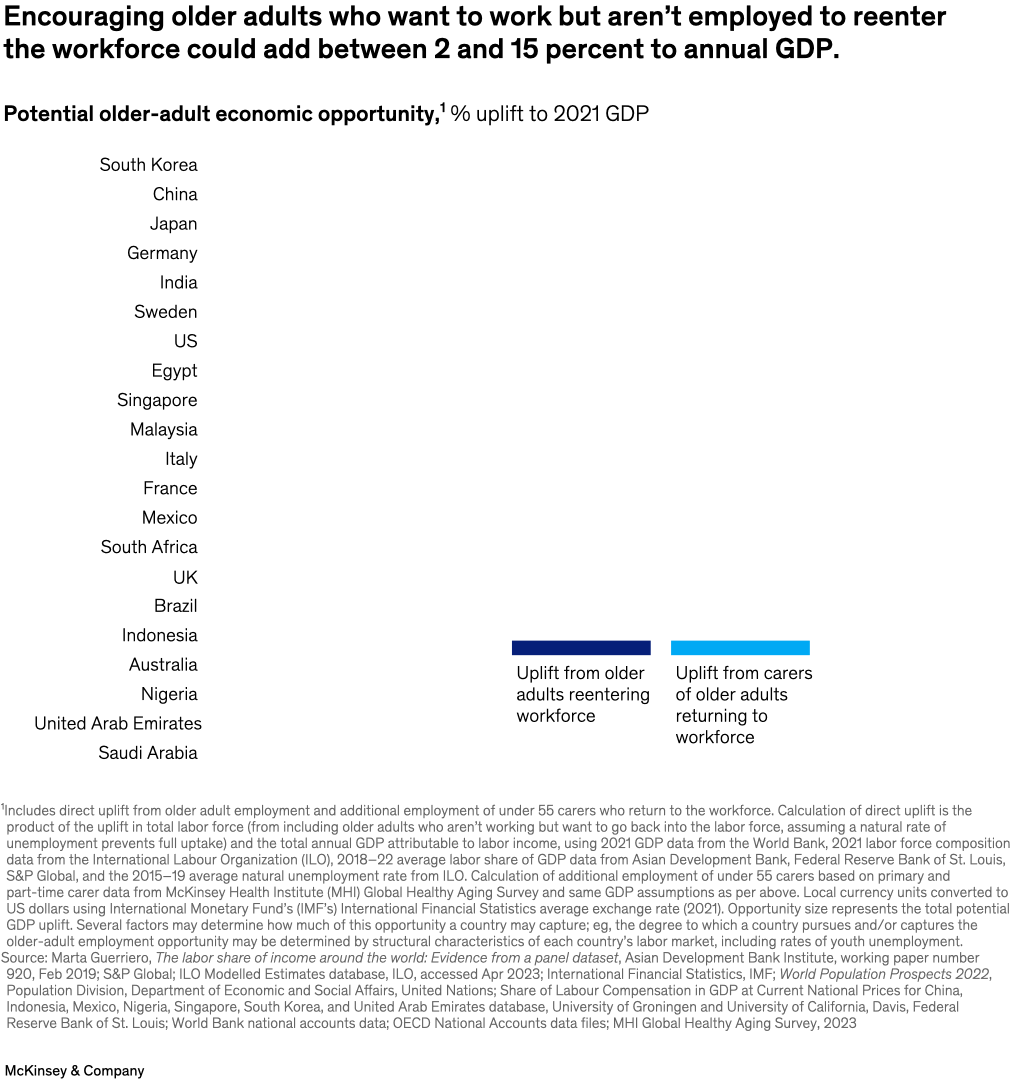Meaningful connections in old age can lead to health and happiness—and benefit economies. Senior partner Hemant Ahlawat and colleagues note that if older adults who aren’t working were enabled to reenter the workforce in 21 surveyed countries, it could result in a boost of $6.2 trillion in annual GDP opportunities.

Image description:
A series of stacked bar charts depicts the economic potential from engaging older adults and their carers in the workforce, measured as a percentage increase to annual GDP in 2021 for select countries. The charts primarily illustrate the GDP uplift from older adults reentering the workforce, which has a more significant effect compared with the contribution from carers of older adults returning to the workforce. The top countries benefiting from this potential are South Korea, China, Japan, Germany, and India, with South Korea leading at a 14.7% increase. In contrast, the countries with the least potential uplift include Indonesia, Australia, Nigeria, the United Arab Emirates, and Saudi Arabia, with Saudi Arabia having the lowest increase at 1.7%.
Footnote 1: The uplift calculations include direct contributions from older adult employment and under 55 carers reentering the workforce, using 2021 GDP data from various global financial sources. The opportunity size represents the total possible GDP uplift, influenced by each country’s labor market structure.
End of image description.
To read the article, see “Aging with purpose: Why meaningful engagement with society matters,” October 23, 2023.